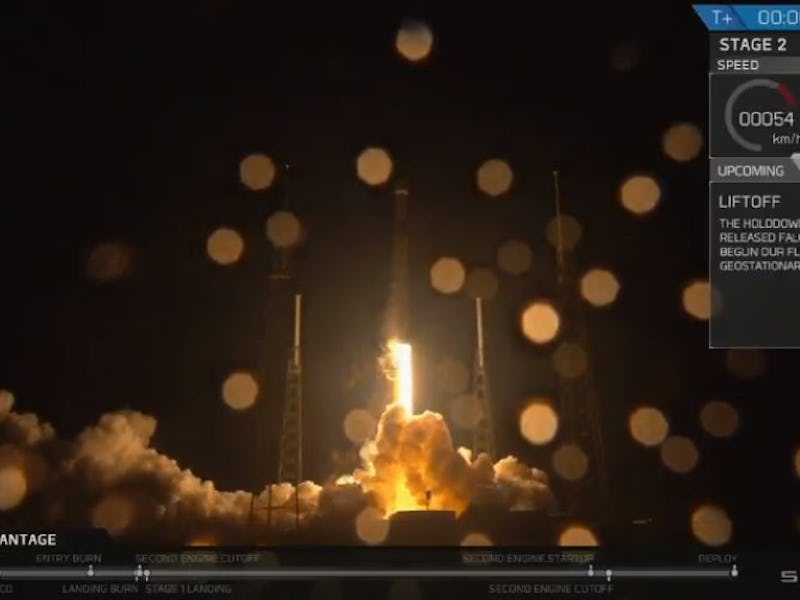SpaceX has set a new record for annual landings on a single drone ship, a key step in the company’s goal of making rockets reusable. The firm launched the Telstar 18 satellite into geostationary transfer orbit on Monday, with the first-stage booster returning to earth on the Of Course I Still Love You drone ship in the Atlantic Ocean. It’s the fifth this year for the ship, and the first time more than four boosters have successfully landed on a single ship in one year.
The Vantage is the third high throughput satellite from Telstar and the first to cover the Asia Pacific region, providing broadband connectivity across the area. The launch took place from Space Launch Complex 40 at Cape Canaveral Air Force Station in Florida. While the four-hour launch window opened at 11:28 p.m. Eastern time on Sunday, the event was pushed back to 12:45 a.m. due to weather. The satellite was deployed 32 minutes after liftoff, marking another success in the company’s 67-launch history.
*See more: SpaceX Shares Images of Scorched Falcon 9 Block 5 After First Reuse
Reusing rockets is a key focus for SpaceX, as it seeks to bring down costs and fund more ambitious flights to Mars. The Falcon 9 costs an estimated $62 million to produce, with the booster comprising around $46.5 million of that cost. SpaceX reused five Falcon 9 boosters last year, a figure that has risen to eight so far this year. The company debuted its new “Block 5” design with the May 11 launch of the Bangabandhu Satellite-1, a booster designed with reusability in mind.
The Telstar satellite, which went into orbit on the new “Block 5” design, will be located 138 degrees east, covering the Asia Pacific region all the way to Hawaii. The craft is expected to serve customers in Mongolia, Australia, New Zealand, south east Asia and the north Pacific Ocean for up to 15 years, entering commercial service this fall.
The new record bodes well for CEO Elon Musk’s future plans. Ahead of the May 11 mission, he told reporters that the company aimed to demonstrate two orbital launches for the same “Block 5” in a space of just 24 hours, reaching the goal no later than next year.
If it can achieve this, it bodes well for plans to send a series of “BFR” rockets to Mars with the goal of refueling and coming home.
